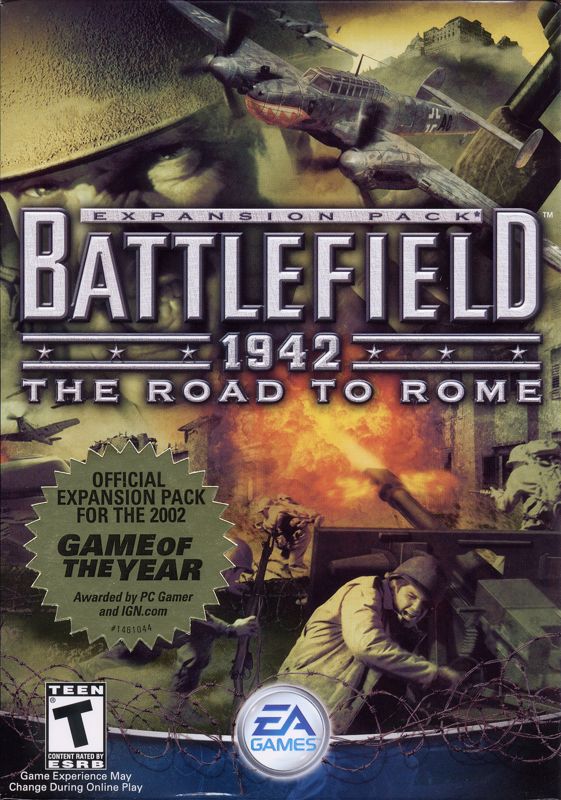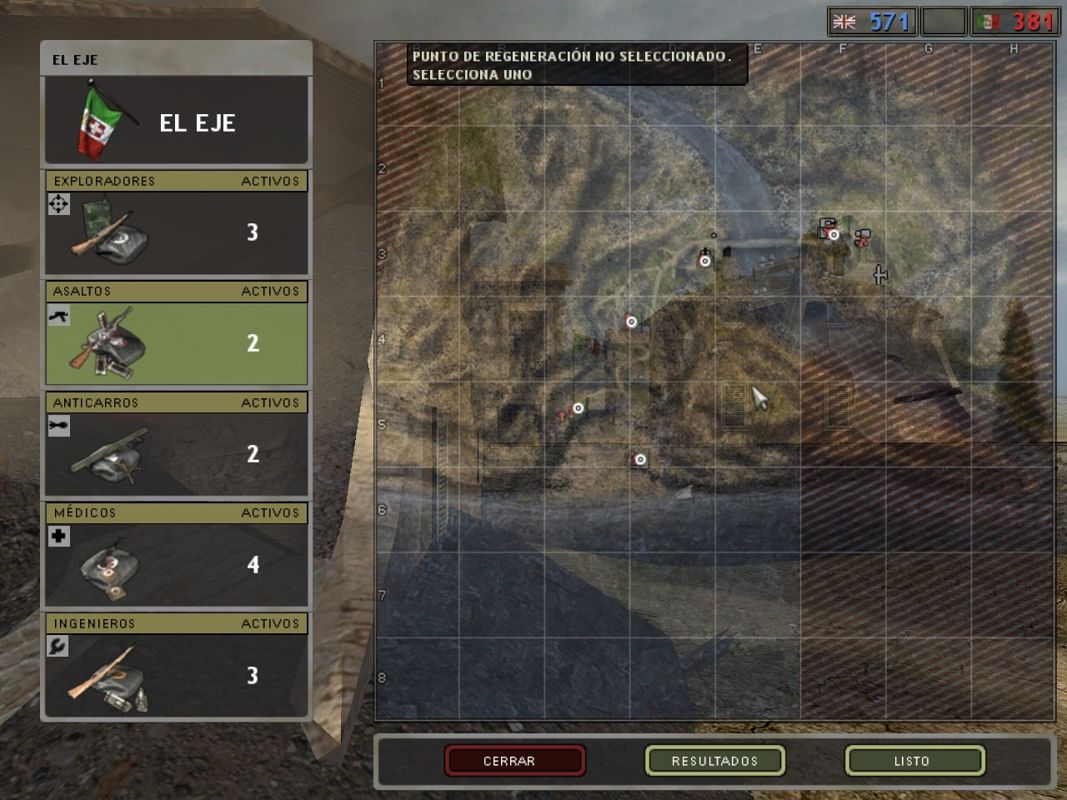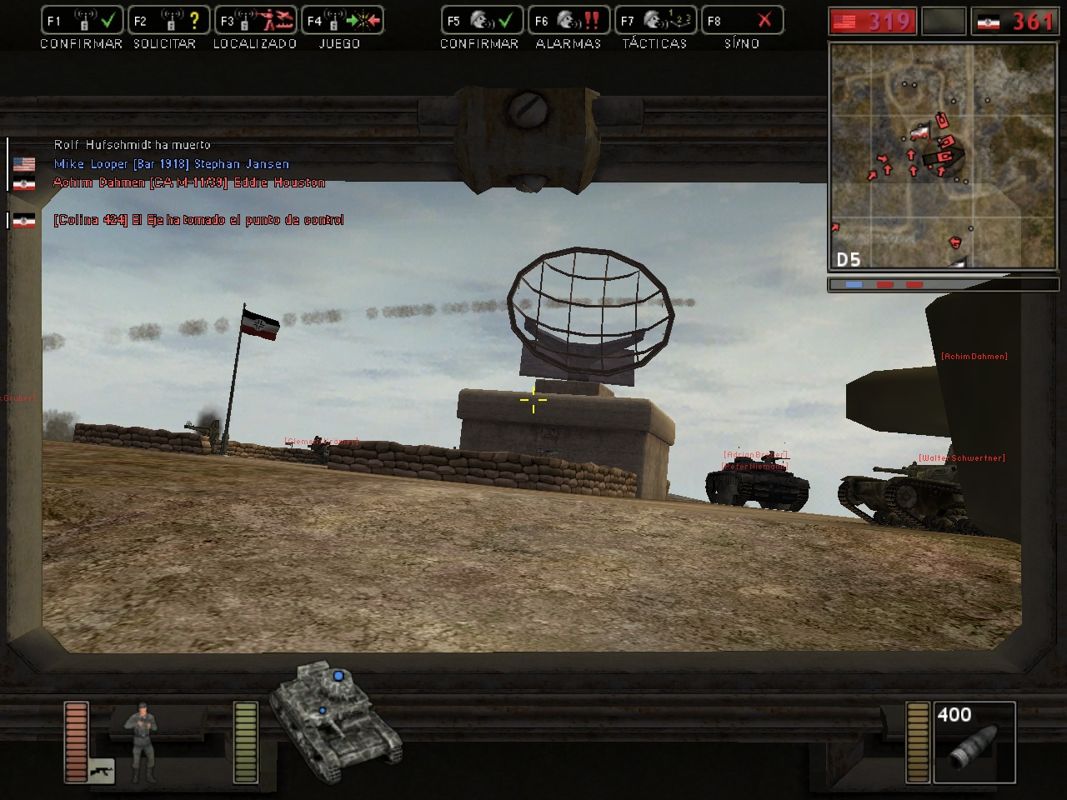Retro Replay Review
Gameplay
Battlefield 1942: The Road to Rome expands upon the core mechanics of its predecessor by transporting players to the Italian and Sicilian theaters of World War II. The familiar large-scale, vehicle-based combat remains front and center, but with the addition of six meticulously crafted maps that highlight key operations such as the amphibious landings of Operation Husky and the rugged hills of the Italian mainland. Each map supports up to 64 players in multiplayer sessions, delivering chaotic, adrenaline-fueled battles where strategy and teamwork are paramount.
(HEY YOU!! We hope you enjoy! We try not to run ads. So basically, this is a very expensive hobby running this site. Please consider joining us for updates, forums, and more. Network w/ us to make some cash or friends while retro gaming, and you can win some free retro games for posting. Okay, carry on 👍)
One of the standout features of Road to Rome is the introduction of two new factions: the French Foreign Legionnaires and the Italian Army. These additional forces offer fresh loadout options and tactical approaches, whether you prefer the defensive fortifications of the Italian Alpini or the aggressive maneuvering of legionnaires. Alongside new handheld weapons—like the rifle grenade launcher, the Sten SMG, and the classic bayonet charge—players have more tools than ever to adapt their infantry playstyle on the fly.
Vehicle combat also receives a significant boost with eight new vehicles. From the twin-engine German BF-110 bomber to Italian armored cars and amphibious landing craft, each unit carries its own strengths and weaknesses. The emphasis on combined arms warfare means that success hinges on balancing air strikes, armored assaults, and infantry advances. Classic Battlefield elements such as parachuting into hotspots and coordination with squadmates remain as thrilling as ever in these new environments.
Road to Rome heightens replayability with its unscripted single-player mode, featuring improved AI designed to react dynamically to each battlefield situation. Unlike the more linear campaigns of other shooters, this mode eliminates rigid scripting, so AI squads flank, retreat, or regroup based on the evolving battle, creating unique challenges every time you boot up the game. This intelligent AI complements local LAN sessions and bot matches, making the expansion just as engaging for solo players as it is for online veterans.
Graphics
Visually, Road to Rome maintains the solid World War II aesthetic of Battlefield 1942 while introducing new environmental textures and terrain features specific to the Mediterranean theater. Rolling hills, olive groves, and weathered stone villages transport players into an authentic Italian setting. The six new maps are rich with detail—from the narrow alleyways of Sicilian towns to the sun-baked beaches of southern Italy—offering distinct tactical challenges and scenic variety.
The graphical enhancements don’t drastically alter the engine, but the new assets—vehicle models, weapon skins, and foliage—feel appropriately polished. Italian tanks bear subtle weathering, and the BF-110’s dual propellers cast dynamic shadows during strafing runs. Smoke trails, dirt explosions, and tracer rounds remain as satisfying as in the base game, ensuring that firefights look and feel intense.
Environmental effects such as dust clouds and realistic water physics on landing beaches add immersion without sacrificing performance. Even on modest hardware, the game runs smoothly, making Road to Rome accessible to players who may not have top-of-the-line rigs. Multiplayer servers rarely suffer from significant frame-rate drops, and the optimized netcode handles large skirmishes with dozens of vehicles and players simultaneously.
While modern standards have surpassed the visuals of early 2000s titles, Battlefield 1942: The Road to Rome holds up as a period piece with nostalgic charm. The color palette captures the dusty, sunlit landscapes of southern Europe, and attention to historical detail in uniforms and equipment further enriches the overall aesthetic appeal.
Story
Unlike single-player campaigns driven by scripted cutscenes, Road to Rome uses its multiplayer maps and AI-driven encounters to convey the narrative of the Italian and Sicilian campaigns. Each map is crafted around a historic battle or operation, inviting players to reenact pivotal moments like the Allied push from Sicily into mainland Italy or the German defensive strongholds in the Apennine Mountains. You’re not following a lone protagonist—you’re part of a vast, ever-shifting conflict that plays out differently every match.
The lack of a traditional story mode may disappoint players seeking a cinematic narrative, but the unscripted encounters foster emergent storytelling. You might recall the time your squad held the narrow mountain pass against overwhelming odds, or when a well-timed BF-110 bombing run turned the tide of battle. These player-driven moments become the true narrative heart of the expansion.
Supplementary text descriptions in the loading screens provide historical context for each map, outlining objectives and background information on the forces involved. This helps to ground your actions within the broader tapestry of World War II, even if you won’t find lengthy cutscenes or voiced plotlines. Instead, Battlefield’s hallmark is the spontaneous stories that emerge from player interactions and teamwork.
For history enthusiasts, the expansion’s focus on lesser-known operations and the introduction of factions like the French Foreign Legion add depth. The interplay of Italian and Allied tactics captures the strategic challenges of the Mediterranean theater, allowing you to appreciate the complexity of those campaigns from both sides of the conflict.
Overall Experience
Battlefield 1942: The Road to Rome delivers a robust expansion that deepens the core formula of large-scale World War II combat. With six new maps, two fresh factions, eight vehicles, and additional weapons, the package feels substantial and varied. Whether you’re storming beaches, climbing ridgelines, or coordinating bomber escorts, the expansion offers countless scenarios that keep gameplay engaging.
The strengths of Road to Rome lie in its dedication to multiplayer mayhem balanced by competent AI in solo modes. The unscripted, dynamic engagements create a gameplay flow that resists repetition, encouraging different tactics in every session. The introduction of unique Mediterranean environments and period-accurate equipment enriches the Battlefield universe and caters to both competitive and casual players.
Graphically, the expansion holds up with its authentic portrayal of Italian landscapes and reliable performance even on mid-level systems. While it doesn’t revolutionize the engine, the visual fidelity is more than adequate for immersion. Combined with historical loading-screen blurbs and emergent narrative moments, Road to Rome balances authenticity with accessibility.
In summary, Battlefield 1942: The Road to Rome is a must-have for fans of the original title who crave new battlegrounds and expanded options. Its focus on multiplayer teamwork, varied maps, and dynamic single-player encounters ensures enduring replayability. Whether you’re reliving history with friends or facing off against AI in a solo skirmish, this expansion stands as a strong addition to the Battlefield 1942 experience.
 Retro Replay Retro Replay gaming reviews, news, emulation, geek stuff and more!
Retro Replay Retro Replay gaming reviews, news, emulation, geek stuff and more!









Reviews
There are no reviews yet.